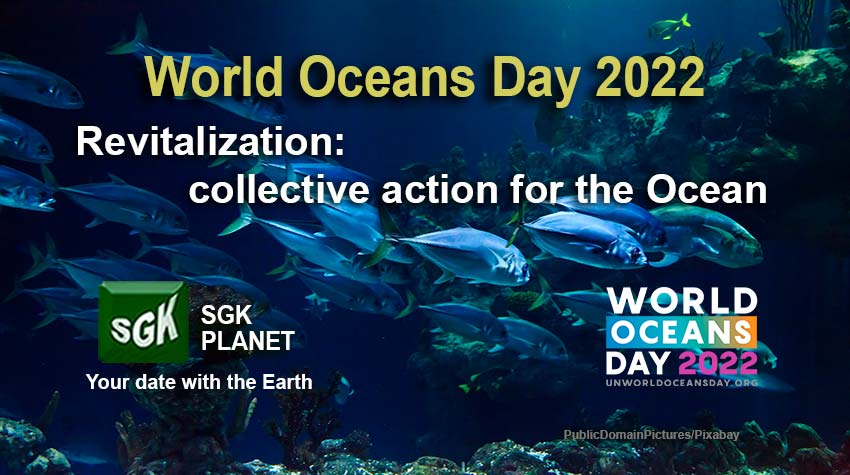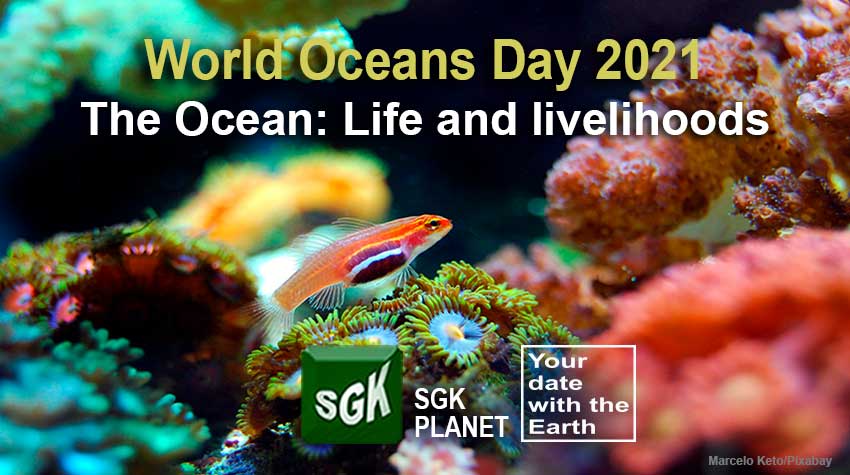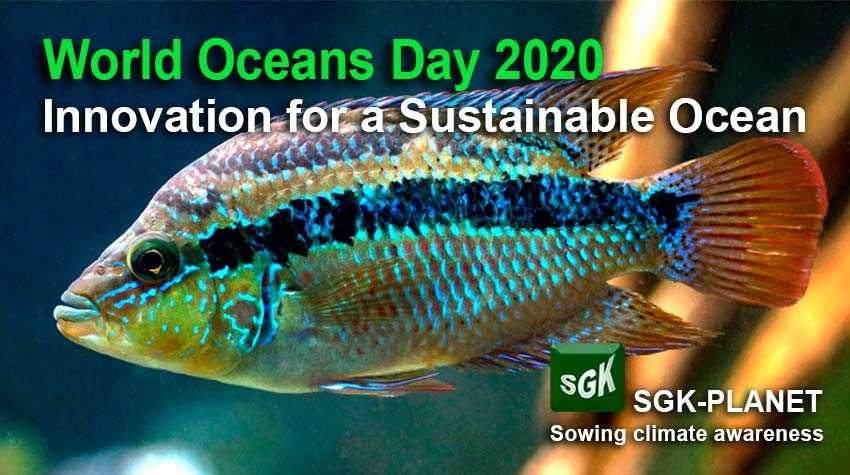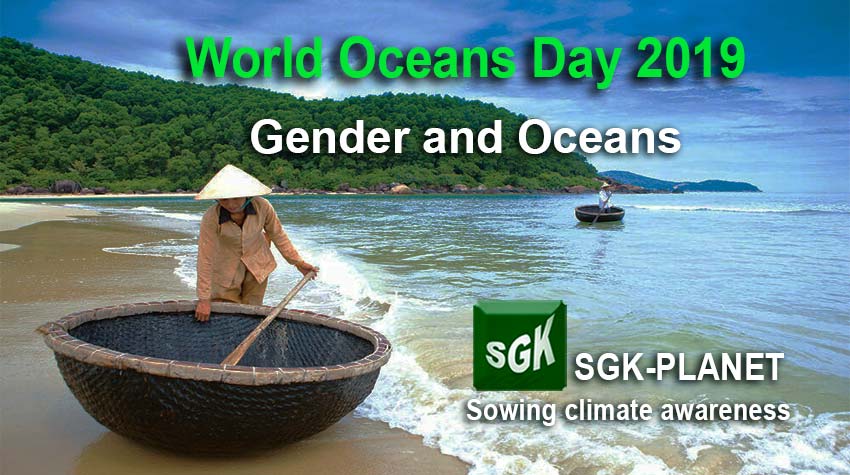FAQs about Oceans
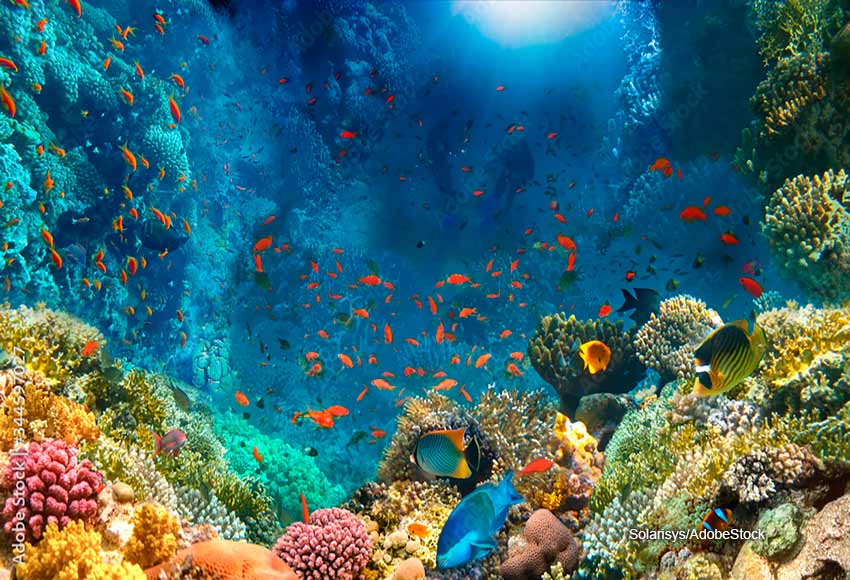
5. What is acidification and how does it affect the oceans?
Ocean acidification is the sustained decrease in its pH, the coefficient that indicates the degree of acidity or basicity of an aqueous solution, due to the absorption of CO2 from the atmosphere. The main cause of ocean acidification is the warming of its waters due to global warming, caused mainly by fossil fuel emissions.
The consequence of acidification is the decrease of carbonate ions, necessary for the formation of skeletons and shells of species such as crabs, lobsters, clams, oysters, placing these species on the lists of danger of extinction. Scientists estimate that between 30% and 40% of the carbon dioxide released into the atmosphere from human activity dissolves in oceans, rivers, and lakes.
Australia’s Great Barrier Reef is a dramatic example of what is happening as a result of warming and acidifying ocean waters. This extraordinary natural formation, recognized as a UNESCO World Heritage Site, suffers massive whitening due to high sea temperatures.
Australia’s Great Barrier Reef is the largest reef system in the world, stretching over 2,300 kilometers in length. It is the habitat of some 1,500 species of fish and 4,000 types of mollusks. More than 200 species of birds visit the reef to spend the night, place their nests and reproduce. Thousands of fish flock to the Great Barrier to feed and spawn. Thus, if the Great Barrier Reef were to disappear, it would mean a catastrophe that would affect a large part of the biodiversity of the seas and oceans of the entire world and all of us who feed on marine fauna.
FAQs about Oceans
1. What are the earth’s oceans and what is their importance?
2. Are the oceans lungs of the Earth?
3. How many marine species are there, and which ones are in danger?
4. How does global warming affect the oceans?
5. What is acidification and how does it affect the oceans?
6. What is overfishing and what consequences does it have for the oceans?
7. What are the main pollutants in the oceans?
8. How do plastics affect the oceans?
Other Secctions of the Oceans
Articles
Revitalization: collective action for the ocean. World Oceans Day 2022
On June 8 we celebrate World Oceans Day 2022, this year framed in the UN Decade of Ocean Sciences and within which the Conference of the Oceans. The theme of 2022 Revitalization: Collective Action for the Ocean wants this year to emphasize the greatness of the ocean as a source of life for all human beings and for all other organisms that inhabit the Earth.
Our planet Earth is also known as the blue planet because more than 70% of its surface is covered by the waters of oceans and seas, which gives it its distinctive color. These huge bodies of water are essential for life as they provide us with food, as well as being important regulators of climate change and generators of most of the oxygen we breathe.
World Oceans Day was proposed during the Earth Summit in Rio de Janeiro, 1992, although it was only implemented in 2008. Since then, World Oceans Day is celebrated on June 8 of each year, by resolution of the General Assembly of the UN. Its objective is to raise awareness about the importance of the oceans and how to preserve them. This year the UN has chosen two reasons to celebrate World Oceans Day.

